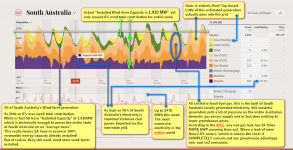So the fact I believe is that if people are happy with the waste of Lithium battery EVs then I think Hydrogen fuel cells will eventually be the future.
Whether its the kids digging up the cobalt (Tesla lovers seem to say things a long the lines "its great to give 5 yo kids a job" etc).
Runing out of these battery materials will happen as I don't think our recycling processes are that great.
But not a problem with Hydrogen or the new methods of fuel-cell design don't require special expensive metals.
Whether its future nuclear reactors that make hydrogen as a side product of electricity or just ch4 conversion for the near future I think it really will take over, long term.
Apparently there are a lot of new ways to make even the most efficient processes of making Hydrogen better, apparently there is technology that plans to use a nuclear reactors waste heat that would normally go to a huge cooling tower instead run through an electrolysis system because electrolysis can work better in heated water in gas form, or something of that nature.
The major advantage of Hydrogen fuel cell is that its incredibly light so it makes flying EVs very easy as shown in the fuel cell drone video https://www.youtube.com/watch?v=AHlrLU7kTys
Everyone whos had a quadcopter knows how annoying that 20minute limit is and how everytime you reuse you battery it only gives even less time because its being beat to sh1t every time under huge amp draw.
A Hydrogen Fuel cell drone that can fly as long as 2 hours and do it every time reliably beats the crap out of battery based flying.
The Lilium VTOL designers say they need about 280KWh lithium battery pack to be practical ( https://www.electrans.co.uk/lilium-electric-aircraft-vtol-order/ ), which is about 3 times bigger/heavier than the large sizes of Tesla EV battery, so battery based flying EVs just aren't going to happen, as far as I am concerned no magic battery will happen, and instead Hydrogen fuel cell is the magic battery, even if it takes a lot of energy to generate the Hydrogen in the first place, its still more efficient than trying to lug a ridiculously heavy battery. https://www.youtube.com/watch?v=ohig71bwRUE
It's been stated in all the local media in Australia many times now that unless you charge your Tesla up in Hydro-electricity based Tasmania then you actually emitting more co2 per km traveled in your coal electricity charged Tesla than in a normal ICE car. But everyone still loves Tesla's, so if people are going to be that dumb or deliberately that selfish and dumb then Hydrogen can't be argued with either.
This is because the inefficiencies of wind/solar renewables are incredibly bad as both are around 20%, in reality Hydrogen fuel-cell based technology is more efficient, just look at SA wind at 6% CP generation below.
https://en.wikipedia.org/wiki/Fuel_cell#Efficiency_of_leading_fuel_cell_types
According to the U.S. Department of Energy, fuel cells are generally between 40–60% energy efficient.
This is higher than some other systems for energy generation. For example, the typical internal combustion engine of a car is about 25% energy efficient.
In combined heat and power (CHP) systems, the heat produced by the fuel cell is captured and put to use, increasing the efficiency of the system to up to 85–90%.
Also it should be basic common knowledge that Hydrogen is technically not as easily flammable as gasoline as this video explains in concentrations, unless its in a confined space its then a problem.
https://youtu.be/YJBzEYduKK8?t=1m1s
On another subject here is South Australias week of wind, was about 6% total contribution, one of their worst weeks. The wind has picked back up again but it seems to be really struggling with days dipping into zero wind generation now and then, as reported in the local news papers
https://www.heraldsun.com.au/blogs/andrew-bolt/why-we-cant-rely-on-wind/news-story/cd5aa1db477856ced29132d6bec56c4c
I created this for noobs to help drill in the reality of wind because you would be surprised to find how many folks just assume that wind generation always runs at about 80% capacity rather than the 20% on average around the world we see in the stats.



